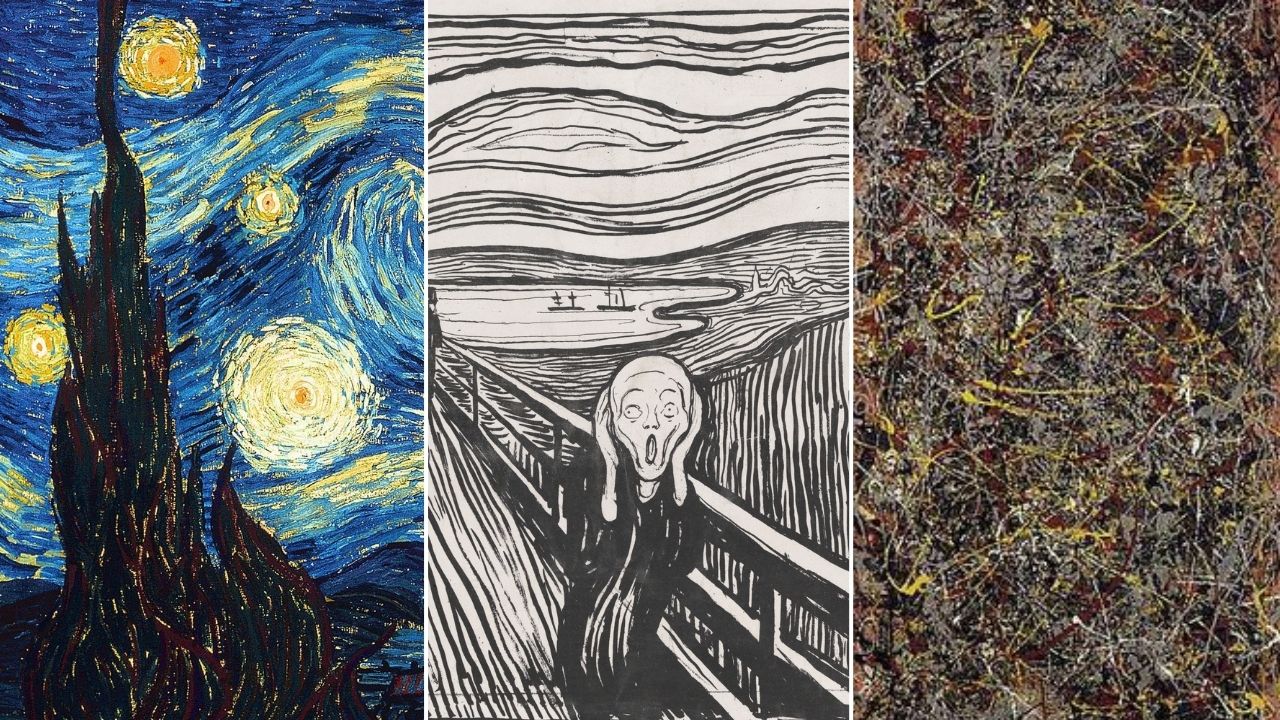
Vincent van Gogh. Edvard Munch. Jackson Pollock.
What do these three names have in common?
Of course, there is the obvious – all three are artists, all giants in the art world. They are all hugely influential. All of them have their own artistic identity and style that most people familiar with art could put the artist’s name to.
But, there is something else that connects them – a part of each of their stories that they all share, and that touched their art, and therefore the whole art world, in an undeniable way…
Bipolar disorder is a mental illness that causes individuals to fluctuate between two states of mood: depressive and manic.
While manic, the individual might experience feelings of intense happiness and even euphoria and have surges of excess energy. But during a depressive episode, they can feel any of the symptoms of depression weighing them down: hopelessness, lack of motivation, or disinterest in activities they once enjoyed.
For this reason, bipolar disorder is also called manic-depressive illness.
As you can imagine, living with BPD doesn’t only impact the person with the illness – it also colors the way that the individual relates to others and, of course, expresses themselves. Some studies even show the intense feelings experienced with BPD contribute to an artist’s creative expression, and some artists hesitate to treat their symptoms because they fear that treatment will curb their creativity.
This is one of the reasons that fiction has the stereotype of the “tortured artist.”
But the conversation is still ongoing. As a mental health professional, I empathize with the creative drive, but I have seen treatment work wonders for patients who go on to discover an even healthier outlet for their creativity.
If you or someone you know is struggling with BPD, these 5 tips can help you manage the symptoms…
1. Seek professional help.
No matter what is going on in your life, seeking the help of a mental health professional is always a step in the right direction. Finding a caring, trained individual to support you as you discover what your best life looks like is nothing to look down upon.
However, it is especially crucial that individuals with BPD seek support from professionals. This illness creates a unique set of needs that a professional can help fill, such as talk therapy and medication.
2. Create a routine.
Because BPD creates an internal instability, creating an external stability helps to establish more of a balance. As well as talking to a professional, eating, sleeping, and exercising with structure at consistent times each day is a good practice in general, but it is especially helpful for managing symptoms of this illness.
3. Stay connected with your support system.
One of the consistent thoughts among sufferers of depression is that they are alone. They often feel that they are experiencing something that isolates them from others, and so they begin to isolate themselves.
Remaining connected to strong, healthy relationships is one effective way to combat BPD. Family, friends, and other supportive individuals can encourage and console when things are difficult.
4. Take care of yourself.
Both ends of the spectrum, manic and depressive, can make it difficult for sufferers of BPD to make room for their needs – which can make symptoms of the disorder even more pronounced.
Prioritize activities that reduce stress, like meditation, and make sure that your basic needs are met – balanced diet, adequate sleep, etc. And don’t forget that self-care also includes moderation of mood-altering and addictive substances like alcohol.
5. Be aware of your mood.
One of the best ways to understand the impact of someone’s BPD is for them to keep a mood journal. The better they track their mood, the more they are able to see fluctuations, sense patterns, and prepare for symptoms.
If you can relate to these symptoms, do not worry. Knowledge is power. The better we know ourselves and our symptoms, the better we can take action to improve them, and the better our lives will be. Every insight leads us one step closer to our best life possible. That’s why I write to you. 🙂
Make today your masterpiece, and…
Happy Easter!
Florina
P.S. If you think this information would be helpful to someone you know, feel free to forward them this email. I know I would want someone to do it for me!
Get My Blog Posts Right in Your Inbox Every Week
Make your mental health a priority. Receive tips and strategies for living well – mentally, physically, and emotionally – every week.
Get My Free Guide: 7 Cheap, Simple Strategies for Boosting Your Brain Performance
Better focus – clearer memory – faster cognition – more mental clarity – improved intellect…
Your brain is capable of beautiful things. If you don’t think you’re getting the most out of your cranial supercomputer, you can reap the benefits of these 7 simple strategies for the low, low price of “free.”